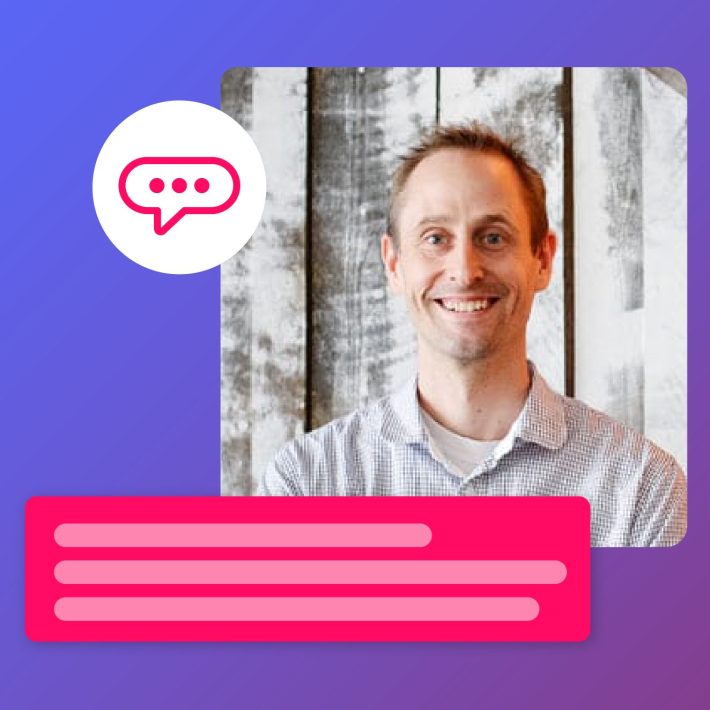The Data Scientist’s View: What Marketers Need to Know About ChatGPT
- February 17, 2023

The AI space has changed tremendously over the past few years.
When we started Phrasee eight years ago (it’s our birthday in February!), natural language generation (NLG) was a small, niche field that virtually nobody had even heard of – let alone tried to commercialize. Phrasee was doing something completely new, whereas now, in 2023, generative AI is mainstream.
Unless you’ve been living under a rock these last few months, you’ll have heard (maybe too much) about ChatGPT. As a quick reminder, it’s a language generation model that’s attracting a whole lot of attention for its ability to generate content on pretty much any topic imaginable.
ChatGPT is an incredible tool, and there’s a lot of potential for marketers (as well as some pretty significant limitations), so what do marketers need to know about it?
What are the limitations of technologies like ChatGPT?
Despite the hype, there are some very serious limitations of large language models like ChatGPT.
Ever since their inception, these solutions suffered from “hallucination” – or, in other words, making stuff up. These models are built to generate “probable output” based on the information available to it, but this won’t always match up to the user’s intent. It’s getting smarter, but this problem hasn’t completely gone away… so how can you trust a tool that might be generating untrue information?
When Phrasee started out, AI tools like ChatGPT didn’t exist, as deep learning hadn’t yet emerged. Phrasee’s approach to generating content is quite different. We had to use our own ingenuity to come up with smart solutions to marketers’ content generation (and optimization) problems. We use an approach that can be called “controlled NLG,” distinguishing it from a pure deep learning-based approach. Unlike a learning-based solution, when we generate language we have precise control over its content and style.
What’s the difference between Phrasee and ChatGPT?
A key advantage of Phrasee is the ability to adhere very strictly to a brand’s tone of voice. Tools like ChatGPT can be hit or miss when it comes to a brand’s guidelines or house style. At Phrasee, we have a suite of tools to ensure that all content is generated to a brand’s specifications.
Secondly, you won’t get hallucinations with Phrasee! We don’t have to worry about our system making up content that doesn’t exist, as it’s based on input from each brand, rather than drawing from vast and unspecified online sources.
Furthermore, with Phrasee you don’t have to worry about toxic output. Our CEO, Parry, explored how quickly ChatGPT reveals its prejudice, which is obviously a risk that no brand will want to take with its own content. Unlike ChatGPT, Phrasee generates language it was specifically designed to create, minimizing business risk.
Finally, there’s the matter of linguistic diversity and performance. You may notice that the content generated by tools like ChatGPT feels fairly generic. The language makes sense, and it reads well, but is that really enough for brands who want their marketing to stand out and make an impact?
“Phrasee’s content is specifically built to maximize clicks, opens, and conversions, whereas that’s not the goal of ChatGPT content.”Dr. Neil Yager
What’s next for ChatGPT and generative AI?
It’s notoriously difficult to predict where technology is heading, and ChatGPT is no different. Having said that, there are two possible scenarios at opposite ends of a spectrum:
- We’ve come close to “peak content generation” (for both language, with tools like ChatGPT, and images, with tools like DALL-E), with small, incremental improvements over the coming years
- We’re going to see a series of new, massive breakthroughs in the near future, making the existing systems seem primitive.
Obviously, these are two very different scenarios, and it’s impossible to say which will actually happen. Your bet is as good as mine.
What is interesting, though, is the commercial aspects and applications of natural language generation. What actually is this powerful new technology? What’s the best way to use it? Right now, a lot of AI tools are largely being used to solve the “blank page” problem, to accelerate code development, or for entertainment purposes – people playing around to see what they can make it do. It is a fun way to spend an afternoon. However, we are still figuring out the best way for businesses to use this technology.
One of the clear use cases for natural language generation is marketing. Phrasee is way ahead of the curve in this space (remember, it’s our eighth birthday!). We’ve been doing this for years, and we’ve learned a lot along the way. The world is just catching up with our original vision.


